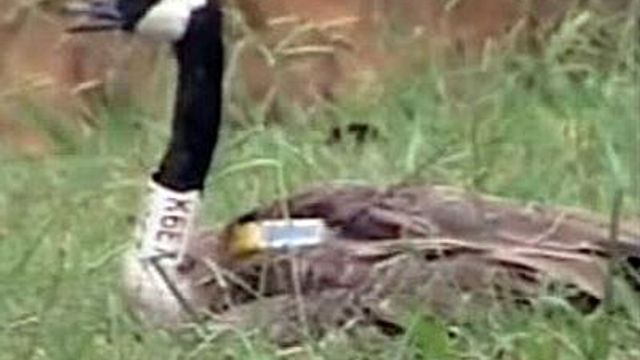Report shows six 'substantial' bird strikes on RDU aircraft
Raleigh-Durham International Airport reported six "substantial" incidents of birds striking planes between 1990 and 2007, according to an FAA report released Friday. None resulted in injuries to people.
Posted — UpdatedThe first disclosure of the entire FAA bird strike database, including the first-ever release of the locations of strikes, occurred largely due to pressure after the dramatic ditching of a US Airways jet in the Hudson River after bird strikes knocked out both of its engines on Jan. 15.
The report revealed that airplane collisions with birds have more than doubled at 13 major U.S. airports since 2000. The two airports at the top of the list – John F. Kennedy International Airport in New York and Sacramento International Airport in California – abut areas where the natural features attract birds.
The report defines a substantial collision as one which damages an aircraft’s structural integrity, performance, or flight characteristics. None of the Raleigh collisions has resulted in injuries to people, and the airport has reported no substantial collisions since June 22, 2002.
Nationwide, 11 people have died when airplanes collided with birds or deer since 1990, the data show.
All 155 people aboard US Airways' Airbus A320 survived when pilot Chesley "Sully" Sullenberger ditched the powerless jet into the river without breaking it up. The most recent fatal bird-strike incident came in October 2007: A student and instructor pilot died when their small, twin-engine business plane crashed in Browerville, Minn., after it struck a Canada goose during a night training flight. That plane's left engine had been damaged by a bird strike the day before and was repaired the day of the fatal crash.
The FAA list, published on the Internet, details more than 89,000 incidents since 1990, including 28 cases since 2000 when a collision with a bird or other animal such as a deer on a runway was so severe that the aircraft was considered destroyed.
Lovell Field, in Chattanooga, Tenn., registered the greatest increase in wildlife strikes, going from four reported incidents in 2000 to 55 in 2008 – a 1,275 percent increase.
Reports also doubled at some of the nation's busiest airports, including New Orleans, Houston's Hobby, Kansas City, Orlando and Salt Lake City.
Wildlife experts have said the population of some birds, particularly large ones like Canada geese, has been growing as more and more birds find the food to live near cities and airports year round rather than migrating.
All told, pilots reported striking 59,776 birds since 2000. The most common strike involved mourning doves; pilots reported hitting 2,291 between 2000 and 2008. Other airborne victims included gulls (2,186), European starlings (1,427) and American kestrels (1,422).
A single United Airlines 737 passenger jet suffered at least 29 minor collisions with birds and one accident involving a small deer – more than any other plane since 2000. In only one case was damage significant, when the jet climbed out of Philadelphia International Airport into a flock of gulls flying at 1,000 feet the night of Jan. 30, 2006. The pilot declared an emergency after at least one engine sucked in a large gull and began vibrating badly. No one was hurt, but the airline spent about $37,000 in repairs.
That same plane has experienced incidents in San Francisco; Salt Lake City; San Jose, Calif.; Houston; Denver; Toronto; New Orleans; Chicago and Spokane, Wash. Its most recent incident was weeks before Thanksgiving when it struck a single small bird during takeoff in Denver.
White-tailed deer struck on runways caused more incidents of serious damage to planes since 1990 – at least 288 accidents – than any individual species of bird. Among birds, gulls, Canada geese, rock pigeons and turkey vultures were most frequently blamed for serious damage in cases where a species identification could be made.
The rarest of collisions occurred in Alaska: Twice planes hit caribou there – a private plane in 1993 and a business jet in 2005.
Copyright 2024 by WRAL.com and the Associated Press. All rights reserved. This material may not be published, broadcast, rewritten or redistributed.





